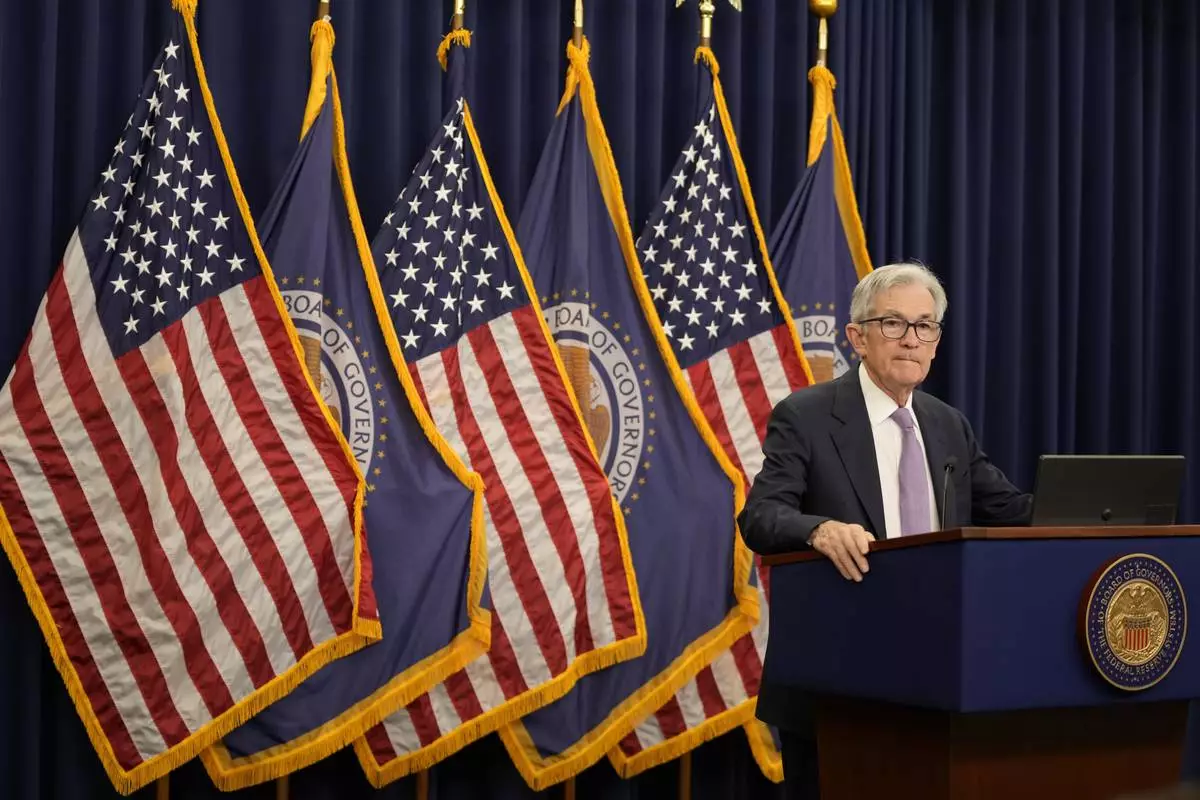TALLAHASSEE, Fla. (AP) — Florida authorities announced Wednesday that they're pursuing a criminal case against a man accused of trying to assassinate President-elect Donald Trump for a car crash that occurred after law enforcement stopped traffic to catch him.
Florida Attorney General Ashley Moody said she obtained an arrest warrant for Ryan Wesley Routh, who already is being held on federal charges in the assassination attempt.
Moody said she is pursuing a charge of attempted felony murder for a crash that seriously injured a 6-year-old girl after officials shut down traffic on Interstate 95 as they tried to apprehend the suspect. A spokesperson for Moody said prosecutors will file the new charge when Routh is in state custody.
The multivehicle crash happened about 30 minutes after Routh's arrest on I-95, according to the state's investigation, but Moody said it was a result of his actions.
The girl, who was traveling with her family, had serious injuries, Moody said.
“When you couple those terrible injuries, together with his other criminal conduct, which we believe rises to the level of domestic terrorism, it turns his actions into an attempted felony murder case,” she told reporters.
Routh's attorney declined to comment Wednesday through a representative.
Routh is being held on federal charges of attempted assassination of a major presidential candidate and gun crimes. He has pleaded not guilty.
Prosecutors say Routh methodically plotted to kill Trump for weeks before aiming a rifle through the shrubbery as Trump played golf at his West Palm Beach country club on Sept. 15. Before Trump came into view, Routh was spotted by a Secret Service agent. Routh allegedly aimed his rifle at the agent, who opened fire, causing Routh to drop his weapon and flee without firing a shot.
Routh’s arrest came two months after Trump was shot and wounded in the ear in an assassination attempt during a campaign rally in Pennsylvania. The Secret Service acknowledged failings leading up to that shooting but has said security worked as it should have to thwart the potential Florida attack.
Days after the Florida assassination attempt, Gov. Ron DeSantis announced the state would carry out its own investigation parallel to the federal probe, with prosecutors pursuing the most serious charges available under state law.
It’s not uncommon for state and federal law enforcement agencies to run simultaneous investigations into crimes, as states may be able to bring charges that are unavailable at the federal level — and vice versa.

FILE - In this image taken from police body camera video and released by the Martin County, Fla., Sheriff's Office, law enforcement officers arrest Ryan Routh, the man suspected in the apparent assassination attempt of Donald Trump, Sunday, Sept. 15, 2024. (Martin County Sheriff's Office via AP, File)

FILE - Ryan Wesley Routh takes part in a rally in central Kyiv, Ukraine, April 30, 2022. (AP Photo/Efrem Lukatsky, File)
WASHINGTON (AP) — The Federal Reserve cut its key interest rate Wednesday by a quarter-point — its third cut this year — but also signaled that it expects to reduce rates more slowly next year than it previously envisioned, largely because of still-elevated inflation.
The Fed’s 19 policymakers projected that they will cut their benchmark rate by a quarter-point just twice in 2025, down from their estimate in September of four rate cuts. Their new projections suggest that consumers may not enjoy much lower rates next year for mortgages, auto loans, credit cards and other forms of borrowing.
Fed officials have underscored that they are slowing their rate reductions as their benchmark rate nears a level that policymakers refer to as “neutral” — the level that is thought to neither spur nor hinder the economy. Wednesday's projections suggest that the policymakers may think they are not very far from that level. Their benchmark rate stands at 4.3% after Wednesday’s move, which followed a steep half-point reduction in September and a quarter-point cut last month.
This year’s Fed rate reductions have marked a reversal after more than two years of high rates, which largely helped tame inflation but also made borrowing painfully expensive for American consumers.
But now, the Fed is facing a variety of challenges as it seeks to complete a “soft landing” for the economy, whereby high rates manage to curb inflation without causing a recession. Chief among them is that inflation remains sticky: According to the Fed’s preferred gauge, annual “core” inflation, which excludes the most volatile categories, was 2.8% in October. That is still persistently above the central bank’s 2% target.
At the same time, the economy is growing briskly, which suggests that higher rates haven’t much restrained the economy. As a result, some economists — and some Fed officials — have argued that borrowing rates shouldn’t be reduced much more for fear of overheating the economy and re-igniting inflation. On the other hand, the pace of hiring has cooled significantly since 2024 began, a potential worry because one of the Fed’s mandates is to achieve maximum employment.
The unemployment rate, while still low at 4.2%, has risen nearly a full percentage point in the past two years. Concern over rising unemployment contributed to the Fed’s decision in September to cut its key rate by a larger-than-usual half point.
On top of that, President-elect Donald Trump has proposed a range of tax cuts — on Social Security benefits, tipped income and overtime income — as well as a scaling-back of regulations. Collectively, these moves could stimulate growth. At the same time, Trump has threatened to impose a variety of tariffs and to seek mass deportations of migrants, which could accelerate inflation.
Chair Jerome Powell and other Fed officials have said they won’t be able to assess how Trump’s policies might affect the economy or their own rate decisions until more details are made available and it becomes clearer how likely it is that the president-elect’s proposals will actually be enacted. Until then, the outcome of the presidential election has mostly heightened the uncertainty surrounding the economy.
“I’ve got the least amount of conviction about what will happen with the economy over the next 12 months than I’ve had in years,” said Subadra Rajappa, head of U.S. rates strategy at Societe Generale. “This is going to be a work in progress as things evolve.”
Such uncertainty was underscored by the quarterly economic projections the Fed issued Wednesday. The policymakers now expect overall inflation, as measured by their preferred gauge, to rise slightly from 2.3% now to 2.5% by the end of 2025. Inflation by their measure is now far below its peak of 7.2% in June 2022. Even so, the prospect of slightly higher inflation makes it harder for the Fed to reduce borrowing costs because high interest rates are its principal weapon against inflation.
The officials also expect the unemployment rate to inch up by the end of next year, from 4.2% now to a still-low 4.3%. That slight increase might not be enough, by itself, to justify many more rate cuts.
Most other central banks around the world are also cutting their benchmark rates. Last week, the European Central Bank lowered its key rate for the fourth time this year to 3% from 3.25%, as inflation in the 20 countries that use the euro has fallen to 2.3% from a peak of 10.6% in late 2022. The Bank of Canada also cut its rate by a quarter-point last week, as did the Bank of England last month.
Beth Hammack, president of the Federal Reserve Bank of Cleveland, dissented from Wednesday’s Fed decision because she preferred to keep rates unchanged. It was the first dissent by a Fed committee member since September.

FILE - Comments by Federal Reserve Chair Jerome Powell appear on a bank of screens on the floor of the New York Stock Exchange, Nov. 7, 2024, in New York. (AP Photo/Richard Drew, File)

File - Federal Reserve Board Chairman Jerome Powell speaks during a news conference at the Federal Reserve in Washington, Nov. 7, 2024. (AP Photo/Mark Schiefelbein, File)













